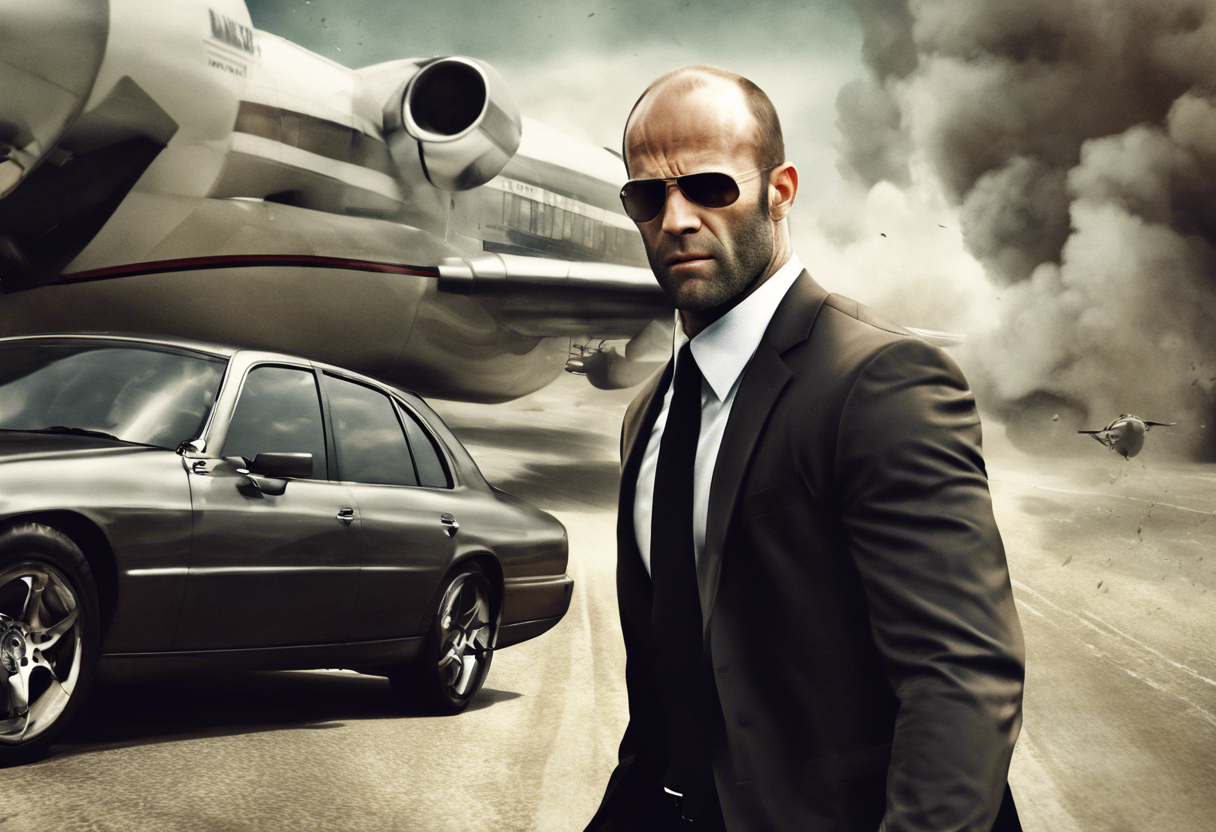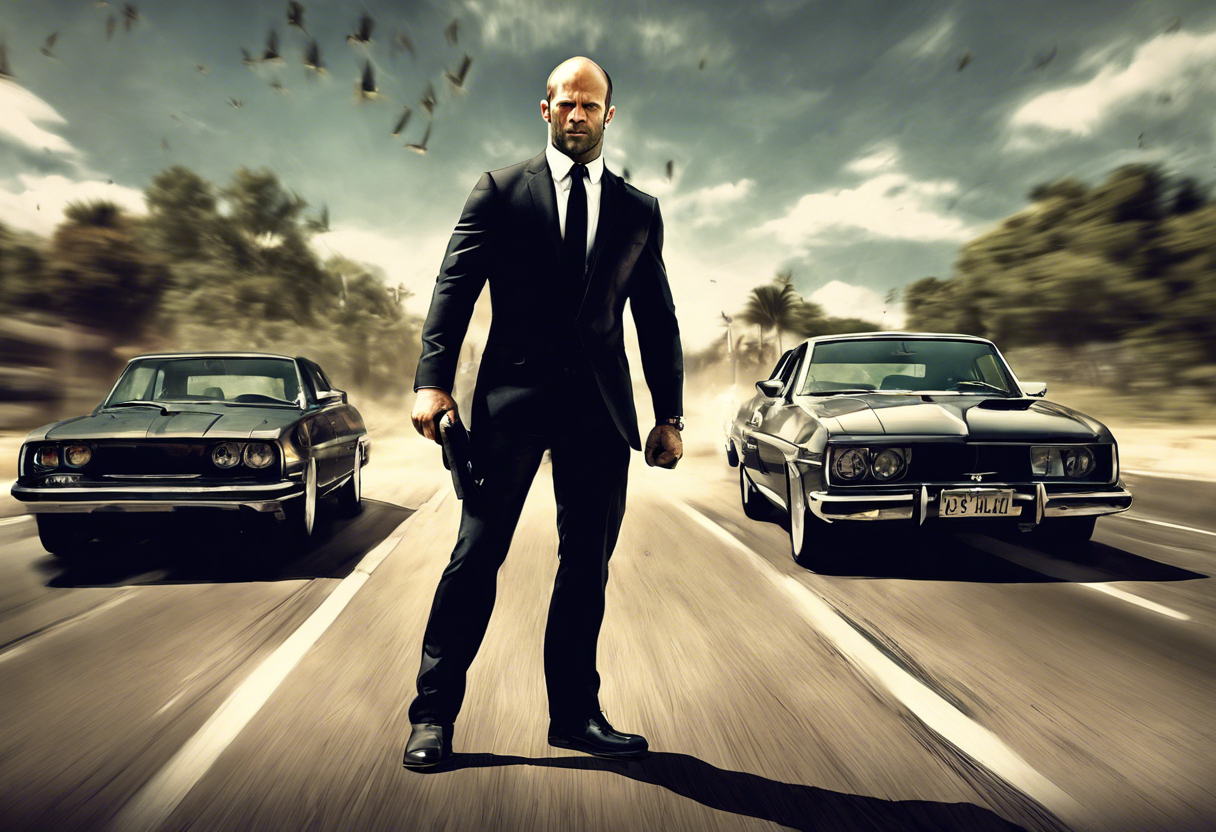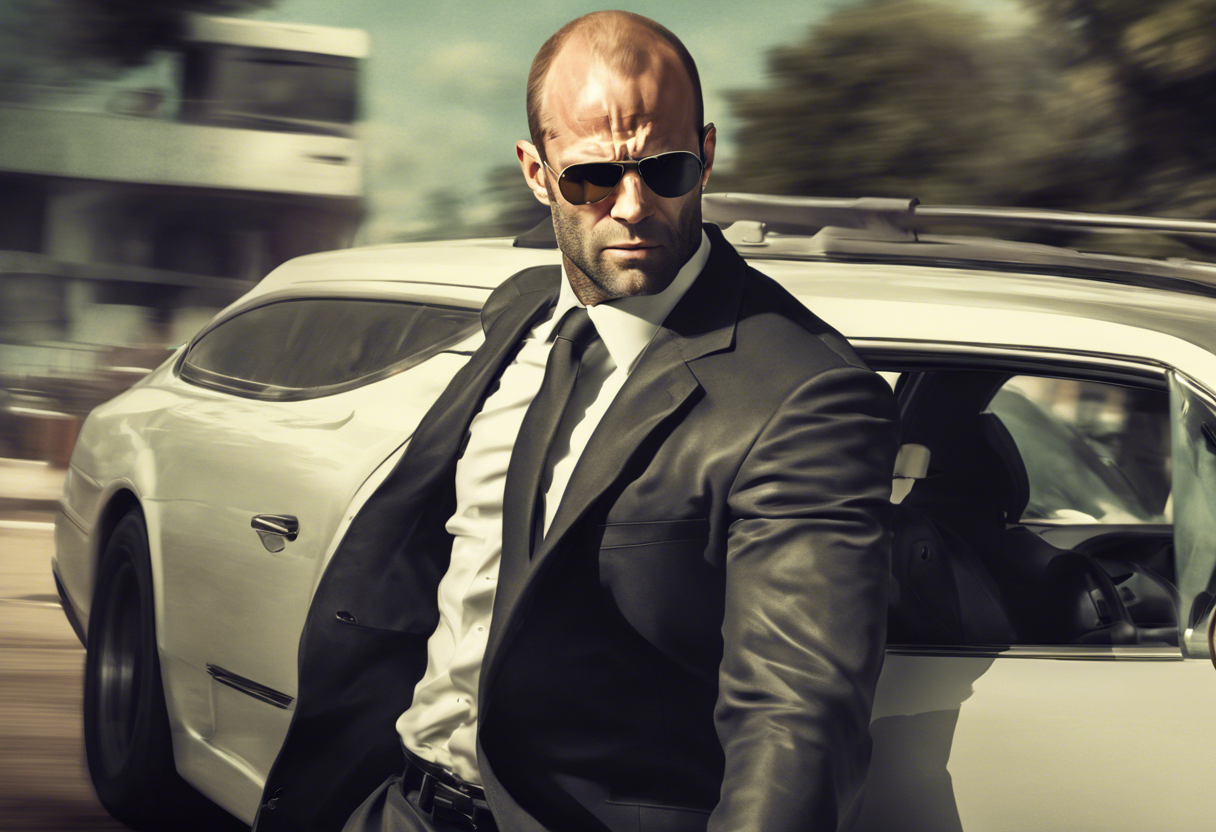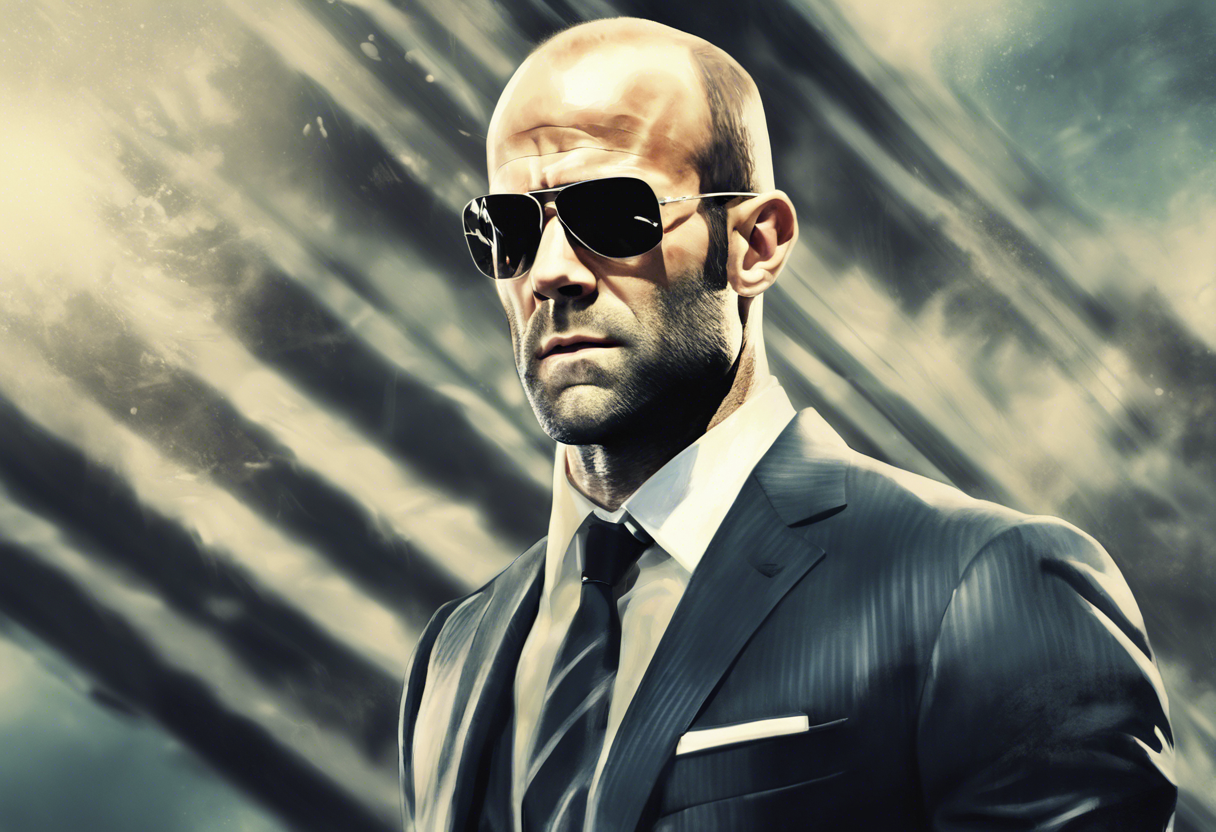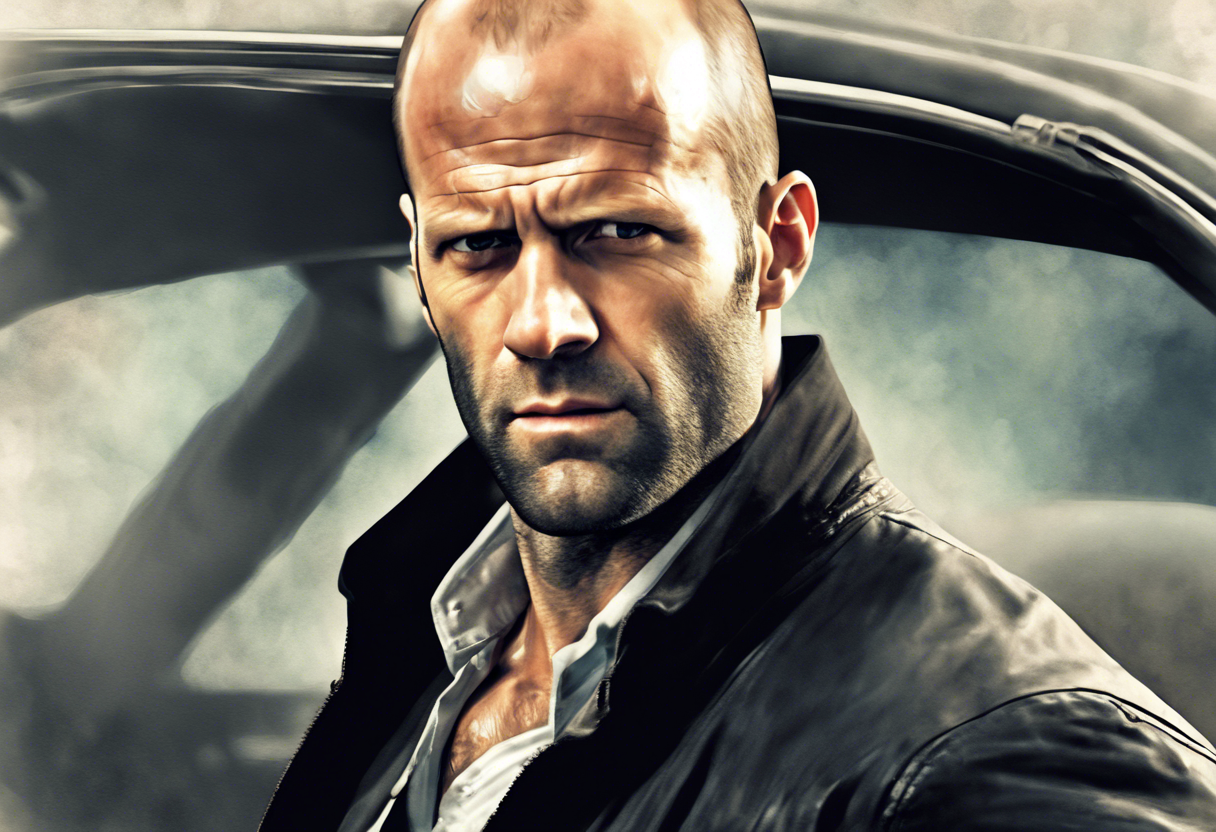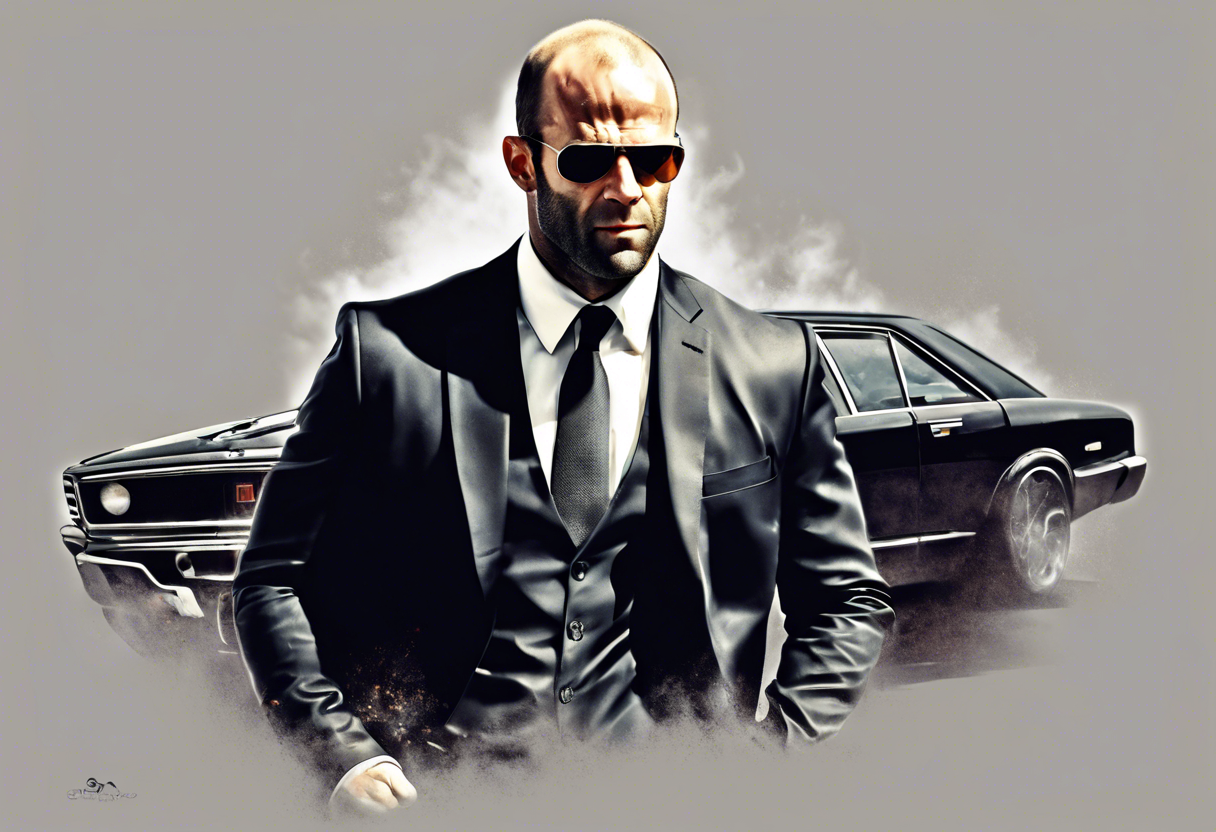Contents
Introduction
Frank Martin is the kind of character you remember because he moves like a machine with rules. He arrived on screen in The Transporter and instantly set a tone. No nonsense. No small talk. Just a man, a car, and a strict code. Fans call him “the driver with rules.” That label sticks because it says so much in a few words. Behind the cool, Frank Martin is a shaped life. He trained. He learned discipline. He chose order over chaos. The film gives him minimal backstory at first. That’s deliberate. The story makes his work and habits the shorthand for who he is.
Creation-wise, Frank Martin grew from a mix of European crime-thriller instincts and modern action choreography. Luc Besson and Robert Mark Kamen developed the idea. They wanted a professional driver as the lead. That driver would be quiet, deadly, and oddly moral. The film’s world builds around him. The rules—never change the deal, no names, never open the package—are more than lines. They are character. For fans, those rules are almost scripture. They tell us how Frank sees the world. They tell us how he keeps distance from it.
There is a clear reason Frank Martin matters in The Transporter. He turns a job into drama. He makes driving into a language. He shows how tiny choices shift outcomes. On a basic level, he is an action hero. On a deeper level, he is a study in control. Even when the plot forces him to break his rules, the film keeps his choices believable. That mix of discipline and occasional slip is the spark that keeps viewers hooked. It also made Frank a template in action films that followed.
Frank Martin’s Role in the Story
In the movie, Frank Martin starts as a professional for hire. His days revolve around pickups and deliveries. The rules shape his life and his work. The plot turns when he opens a package. Inside is a human being, not cargo. That moment shatters his distance. From there, Frank stops being a mere driver. He becomes a protector. The stakes change from money to morality. He is forced into choices that test his code.
Frank’s arc is mostly practical. He improvises, fights, and drives his way out of danger. Yet the film layers those actions with small emotional beats. He shows glimpses of care. He shows irritation at unfairness. He shows stubbornness. Those traits grow into decisions. He helps Lai. He resists corruption. He puts himself in danger for someone who never asked to be a package. That choice defines the film. It changes his life. It makes the audience root for him beyond mere spectacle.
Relationships in the story help reveal him. His interactions are sparse. But they matter. With Lai, he is protective. With antagonists, he is precise. With allies, he is cautious. These little dynamics show who Frank is. He is not a talker. He acts. His actions reveal loyalty, limits, and values. By the film’s end, the arc completes with him still having rules but now with a softened edge. The code survives. The man inside it is slightly different.
Personality, Motives, Strengths, Flaws
Frank Martin’s personality is spare on purpose. He speaks little. He moves deliberately. That economy of words forces the viewer to read his actions. Fans love that. It makes him mysterious without being inscrutable. He operates like a craftsman. Driving and planning are crafts for him. He values timing, order, and routine. Those traits are strengths. They make him efficient and dependable. They also give the films their steady heartbeat.
His motivations are practical and emotional at once. Primarily, he wants control. Control keeps him safe. It also gives him a role he can master. But the story shows a side of him that cares. He has soft spots. When he sees someone suffering, he acts. That contrast—control mixed with empathy—makes his choices believable. It also gives him dramatic weight. He is not perfect. He is human. He loses control sometimes. When he breaks his rules, he pays a price. Those moments expose his flaw: attachment can make a planner reckless.
Frank’s flaws make him interesting. He can be stubborn to a fault. He trusts his skills a little too much. He also keeps people at arm’s length until something forces him closer. Those traits create friction. They fuel conflict. But they also allow for growth. Across the movie, he learns small but real lessons about responsibility. His arc feels earned because the script lets him grow slowly. He does not suddenly change. Instead, he adapts. That subtle evolution is one reason fans still discuss Frank Martin years later.
Role in the Story
Frank Martin’s role in The Transporter is deceptively simple on the surface: he’s “just the driver.” But if you’ve watched the movie as many times as I have, you know it’s never just about the car. From the opening sequence — that insane precision getaway through tight French streets — Frank is presented as the ultimate professional. His rules are his lifeline. No names, no changes, no questions. It’s only when he breaks one of his own rules (rule three, of course) that the story shifts gears. This slip happens when he notices something odd about the package he’s been hired to transport, and finds Lai inside. That’s the split-second where everything goes sideways. He hesitates, looks, and boom. And honestly, it’s one of my favorite parts because it shows Frank isn’t a robot. He has instincts that go beyond contracts and cash.
The dynamic between Frank and Lai is the beating heart of the film’s second act. At first, he’s reluctant to even talk to her — classic Frank, keeping emotional walls high. But through the chaos, you see the connection building. Their quiet conversations between gunfights give us rare glimpses of Frank’s humanity. Then there’s Inspector Tarconi, who acts like this odd mix of frenemy and comedic relief. Their scenes are gold — Tarconi teasing Frank, half-suspicious, half-admiring. You can tell Tarconi enjoys the game, even if he’s technically supposed to arrest him. Frank’s tension with Wall Street, the main villain, plays out differently. There’s zero warmth there, only icy efficiency and calculated risk. Each face-off between them is like watching chess with bullets. And the thing is, Frank adjusts his entire strategy depending on who he’s up against. That’s why his relationships in the film matter so much — they define his actions just as much as the jobs do.
By the time we hit the finale, Frank’s role is no longer just “transporter.” He’s protector, partner, and avenger, all rolled into one. His fight to save Lai isn’t part of the deal — it’s personal. The closing scenes, especially his wordless exchange with Tarconi after the dust settles, seal the fact that Frank isn’t a static action figure. He’s a man whose choices ripple outward, changing lives around him. And maybe that’s why the character works so well: his story isn’t just car chases and roundhouse kicks — it’s about how he navigates the messy, unpredictable human cargo in his life.
What Frank Stands For
The core theme tied to Frank Martin is order versus chaos. His rules are a symbol of order. The world he operates in offers chaos—criminals, betrayals, and violence. The film uses these opposites to create tension. When rule meets chaos, Frank must respond. His responses reveal moral choices. They also show how survival can be ethical. Frank chooses discipline as a shield. The movie asks whether such shields can hold when people get hurt inside the system.
Another symbol is the package. On the surface it is cargo. Deeper down it is secrecy and moral denial. Frank’s willingness to open a package becomes a metaphor. It becomes his confrontation with the human cost of his labor. For a long time, he can pretend packages are inert. Opening one breaks that illusion. The film uses that act to say something about conscience. It asks if a man who profits from distance can remain distant when the human cost is right in front of him.
The car itself also plays symbolic roles. It is not just transport. It is an extension of Frank. The vehicle’s cleanliness and precision mirror his approach to life. When the car gets damaged, it reflects them being tested. Chase sequences are not only action. They are metaphors for making choices under pressure. Driving becomes a test of ethics as much as skill. That layered symbolism gives the movie texture beyond its stunts.
Fans, Media, Influence and Cultural Impact
Frank Martin hit the scene at a time when action heroes were shifting. He was quieter than many and less flashy than some. That minimalism appealed to fans tired of bombast. His code and manner inspired online communities. Fans made lists of his rules. They argued over which rule was most important. Conventions showed cosplayers in suits and gloves. Memes reused clips of his fights and stunts. The simplicity of the character made him easy to reference. That helped spread his cultural footprint.
Media beyond the films picked up on his style. The character inspired marketing aesthetics and even video game mechanics focused on timing and precision. The Transporter’s approach to practical stunts influenced other action films that wanted to show real driving skill. While Frank did not spawn a franchise of endless spin-offs, his archetype did feed later characters. You can see echoes in heroes who value rules and quiet competence.
On the merchandising side, the impact was modest but notable. Fans bought model cars and replica props. The TV series that followed broadened the audience. It introduced the concept to new viewers who might not have seen the films. That helped keep Frank part of genre conversations. Not every cultural moment is big. Frank’s influence is quieter. It sits in style, in behavior, and in how fans value craft over showiness.
How Reviewers and Fans Reacted
Critics often had mixed feelings about the films, but they tended to single out Frank Martin as a strength. Jason Statham’s physicality and timing earned praise. Reviewers called him credible. They argued he grounded what could have been pure stunt showmanship. Fans agreed. Many viewers said the films would not work without his steady presence. Where critics were divided was on depth. Some wanted more backstory. Others liked the small-scale mystery.
Audience reaction was more forgiving. Action fans prioritized stunt quality and pacing. In those areas, the film delivered. The practical effects and fight choreography became talking points. Even critics who disliked plot thinness often praised the action sequences. The result was a split: overall film score mixed, but the character gained approval. That made Frank a solid anchor in franchise discussions.
Over time, retrospectives have softened the harshest takes. Critics and fans re-evaluate the film’s practical stuntwork and pacing. For a generation of viewers who value grounded action, Frank Martin looks more influential than he might have on initial release. He is often mentioned in “best of” lists that highlight effective, quietly confident action leads rather than the shouty blockbuster type.
Why Frank Still Matters
Frank Martin’s legacy is in the details. He proved a simple idea could carry a franchise: a disciplined professional who sometimes acts like a hero. That blueprint has been copied and reshaped, but the core idea endures. Fans who grew up on the early 2000s action wave often point to him as formative. He taught many viewers that action could be tidy, tense, and character-driven at once.
Direct influence shows in later films and TV. Characters with strict codes and a refusal to talk much owe a debt to Frank. Not all copies match his subtlety. But the fact people try shows his staying power. He also helped normalize grounded stuntwork. Filmmakers saw the value of real practical driving over overused CGI. That choice rippled beyond the franchise into how stunts were staged in later decade films.
For fans, Frank Martin remains a touchstone. He is a character you return to when you want efficient thrills and steady competence. He’s not ornate. He’s not tragic. He is focused. That focus is a kind of grace. In an era of noisy heroes, Frank’s silence still matters. He reminds viewers that action can be clean, precise, and human.
References
The references below include production notes, actor interviews, and critical overviews. Where specific details are from canon, they come from the original film and official releases. Fan speculation is noted in fan community threads and forum discussions; those are not treated as canon.

